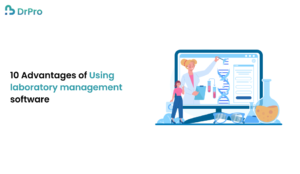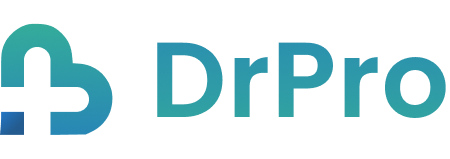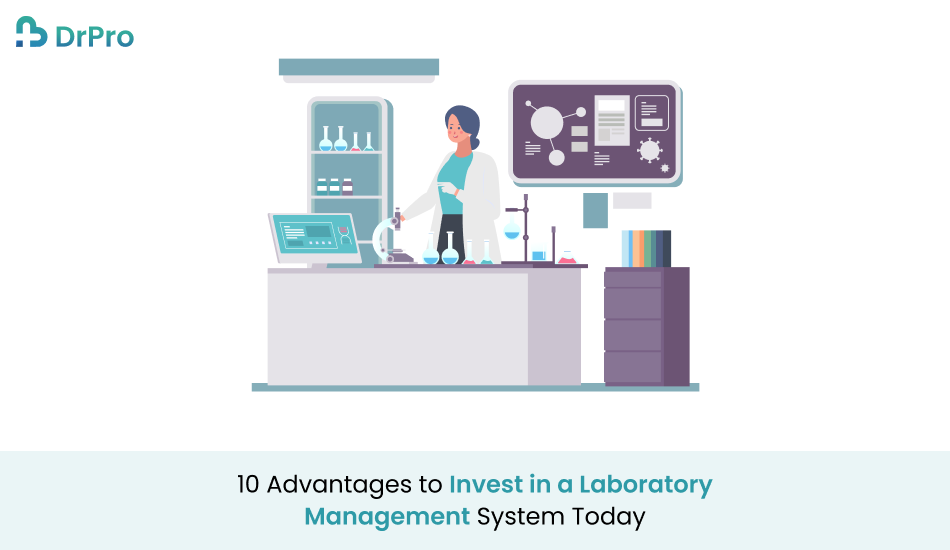Quick Summary
A LIMS is an essential tool in today’s laboratories helping improve the laboratory’s operations. Investing in this software today has many benefits: improved data management, regulatory compliance, workflow, and team collaboration. Throughout this blog, the author will outline ten benefits of implementing laboratory management software and why it should be viewed as a worthwhile investment for all laboratories.
Introduction
In the contemporary scientific world, labs produce humongous data. Inefficiency in the management of these data sets can be managed manually or through a system that was developed a few years back, this is not feasible when a lab is trying to achieve high accuracy, operate efficiently, and above all, work within regulatory frameworks. The solution to these challenges is laboratory management software or; LIMS. Labs around the globe now rely heavily on the software to manage their work processes, data management and storage, analyses, and compliance.
So for any laboratory management software, out there that wants to stay ahead of the pack and keep establishments rolling, it is about time to get a laboratory management system. As such, this blog will expound on the ten main benefits of this course of action, and demonstrate how the correct LIMS will enhance efficiency, augment data accuracy, and reduce costs.
Purpose of laboratory management software
laboratory management software, the full form of which is a Laboratory Information Management System, is the type of software that aids laboratories in handling information, business flows, or processes in their workplaces. It has features that allow laboratories to store their data and ensure they meet the standard regulatory requirements within laboratories, analyze data, and monitor them at the same centralized location.
Primary purposes of LIMS include:
Data Management:
Effectively manage a tremendous amount of lab data, while easily cataloging, monitoring, and accessing the details.
Workflow Automation:
Minimise manual and time-consuming tasks and avoid developing expensive errors.
Compliance Management: Complying with legal provisions we follow GLP, GMP, and ISO also restricts.
Sample Tracking:
Enhance the identification and movement of a sample throughout its life cycle to enhance its disposal.
Integration:
They should be capable of integrating into a system that is running other applications such as Enterprise Resource Planning (ERP), analytical instruments, and databases to have a real-time data feed.
In this manner, laboratory management software can facilitate the achievement of the mentioned functions; thereby allowing laboratories to affect positive improvements in their operations while lessening potential human mistakes and enhancing data reliability in the current higher education laboratory settings.
Key Considerations When Choosing a Laboratory Management Software

When choosing an RM system in the organization the following factors should be considered to meet the needs of the particular laboratory. Here are some key considerations:
Scalability:
Will it be expandable to your laboratory’s growth? Make sure that the software can accommodate a growing amount of data and users that may be relevant to the future development of your lab.
Compliance:
You should verify whether the laboratory management software in question meets the certain regulations your business belongs to, e.g. ISO 17025, FDA 21 CFR Part 11, CLIA.
Integration Capabilities:
The laboratory management software should be easily integrated into your current applications such as ERP software, instruments, and databases which implies the possibility of an effective data exchange as well as data actualization.
Customization:
Laboratories may display a wide range of procedures and approaches. Select LIMS that will be configurable to meet the situation in your laboratory.
User-friendliness:
The software is being designed for the lab technicians and other lab personnel as well as the laboratory management team. Complicated interfaces are innovation thorns and operation challenges.
Data Security:
Because lab data is often deemed highly confidential, some key basic security components include encryption, use of access control grants, and/or improper storage of data.
Cost:
One should consider both the costs incurred at the moment and the proverbial apples and oranges of the particular software. Seek a plan with powerful characteristics that won’t cost a lot of money and which doesn’t require you to pay extra to involve more personnel in the program.
Vendor Support:
Assess the kind of support services that the vendor has provided. It encompasses skill enhancement, product support, and support of product upgrades. A good support system helps in the adoption process and reduces on lock-in period.
Cloud vs. On-Premise:
Choose if your laboratory should be utilizing a cloud or if it should be installed on the site. However, laboratory management software has both strengths and weaknesses: the fact that it is cloud-based allows for greater flexibility and access to data while also being located remotely rather than controlled at will while employing the on-premise system.
Mobile Access: If your lab covers several sites, or employs mobile platforms, check for web capability to be viewed on mobile devices for enhanced portability.
10 Advantages of Using Laboratory Management Software

1. Improvement in handling of data and storage
Centralization of data in laboratory management software makes it convenient for management, storage, and retrieval as well as analysis. This is important for facilitating easy and efficient management of data with not a lot of complications arising out of manual entry of data. As datasets in laboratories combine in terms of size and multiply differently, proper data management becomes the key aspect of accuracy and traceability. LIMS is therefore an effective solution to sample, workflow, and result tracking and management systems.
2. Increased Regulatory Conformity
Moreover, since business is conducted in this environment more strictly, and because many industries are strictly regulated, compliance is an absolute necessity for organizations. Lab management software makes sure that all laboratory activities adhere to some guidelines like GLP, GMP, ISO, and CLIA. The reports generating and audit trails created by laboratory management software can be utilized to easily satisfy any regulation needed by the lab. It also permits real-time updates on the compliance standards bearing in mind that the regulatory bodies might change their compliance standards thus eliminating costly non-compliance complications.
3. Faster Decision-Making with Real-Time Data
LIMS offers convenient real-time access to information that enables the lab personnel and management to make informed decisions quickly. Through real-time result confirmation, it becomes easier for lab technicians or scientists analyzing data to make changes where necessary depending on other data being received at that specific time. The results obtained are immediately available which in turn makes decisions faster and increases operational flexibility.
4. Automation of Routine Tasks
A laboratory management software system takes care of routine and tedious tasks, thus saving the man hours that could be used fruitfully for science. Processes like sample logging, data input, and reporting can be automated enhancing the operation of the lab while eradicating the possibility of human interference. Automation also helps the lab to increase capacity without diluting outcomes and results on the quality and accuracy of the tasks performed.
5. Better Sample Tracking
This solution follows the inputs and outputs of a sample right from the time it arrives in the laboratory and up to when it is disposed of. This functionality is critical because Calibration samples are intrinsic to sample quality and traceability. Regardless of whether the number of samples produced and managed may be in the hundreds or thousands; there is always a guarantee that none of the samples shall be misplaced or misused by the laboratory management software. When using clear sample audit trails and logs, it is easy to tell who touched a sample and why he or she did so, as well as the time of interaction.
6. Interfacing with Analytical Analyzers
Today’s laboratory management software can support different analytical, which are used in laboratories, which means that data exchange can be performed automatically. This saves a lot of time in data collection since there is no need to input the data manually, also errors are eliminated. Connections to the equipment in the lab make working processes more efficient and deliver reliable data.
7. Improved Collaboration and Communication
Another advantage of laboratory management software is that it brings the data into one central database with access for all appropriate users. This enhances coordination with other departments and groups in the lab as well as with other institutions. Scientists and researchers can get more recent relevant information and data, which enhances discovery and improves research outcomes since they may work in a team.
8. Cost Efficiency
while there is usually a cost outlay incurred in acquiring and installing the laboratory management software, the probability of a long-term return on investment is very real. Laboratory management software on cutting operational costs through automating processes, effectively using the available resources, and minimizing wastage. From this perspective, regarding manual errors and having the support of extra staff or records, the lengthened laboratory operational costs can be reduced dramatically.
9. Scalability for Growing Labs
The larger your laboratory gets the larger your data and operational requirements will be. Laboratory management software is an adaptable product and can support the growth of the lab. It can scale up the volume of data contained, users, and workflows to make certain that your operations flow smoothly as you expand. In choosing an LMS that grows and evolves, you are planning for the future – the software you choose needs to maintain relevance for decades.
10. Increased Data Security and Integrity
Security of data is very important in laboratories, especially when the lab deals with data that has to do with patient info or data owned by a particular company among others. Good laboratory management software has security features including role-based access control, security on data content and storage, and data encryption to protect against unauthorized access and data tampering. Also, due to efficient documentation, for example, in cases of breaches of such security standards as GLP or GMP, LIMS provides an audit trail.
Conclusion
Purchasing laboratory management software today is one of the best investments that a particular lab can make, should it wish to improve its daily functioning as well as data management while also meeting state requirements. The benefits are almost apparent, which include; LIMS relieves the petty work of analysts, minimizes errors made, brings real-time information, and can expand with your lab as it slowly grows. Labs themselves stand to benefit from improved efficiency, integration, and, ultimately improved scientific results by investing now at a lower cost.
With ProjectTree and DrPro working together, clients benefit from an integrated solution that bridges the gap between project management and medical practice
FAQs
1. What is a laboratory management software?
Laboratory management software is software designed to manage lab data, workflows, and compliance processes, improving operational efficiency and data integrity.
2. Can laboratory management software help with regulatory compliance?
Yes, laboratory management software is designed to help labs comply with various industry regulations such as GLP, GMP, ISO, and CLIA by automating reports, maintaining audit trails, and ensuring data accuracy.
3. What are the primary benefits of LIMS integration with lab instruments?
Integrating LIMS with lab instruments eliminates manual data entry, improves data accuracy, and speeds up workflows, allowing for more consistent and reliable results.
4. How does laboratory management software improve sample tracking?
Laboratory management software tracks the entire lifecycle of a sample, from receipt to disposal, ensuring proper handling, traceability, and integrity throughout its time in the lab.
5. Is laboratory management software scalable for growing labs?
Yes, laboratory management software is designed to be scalable, allowing labs to add more users, manage larger data sets, and accommodate additional workflows as they grow.


